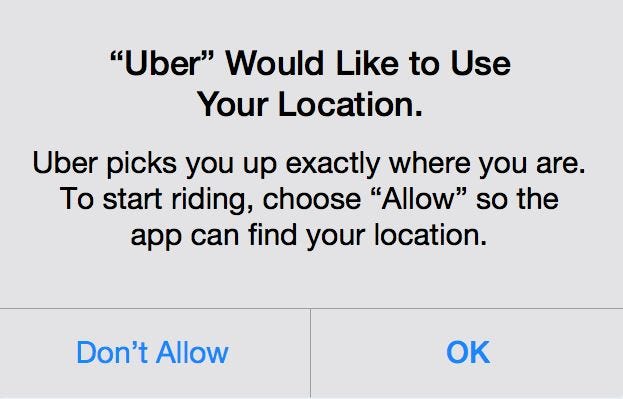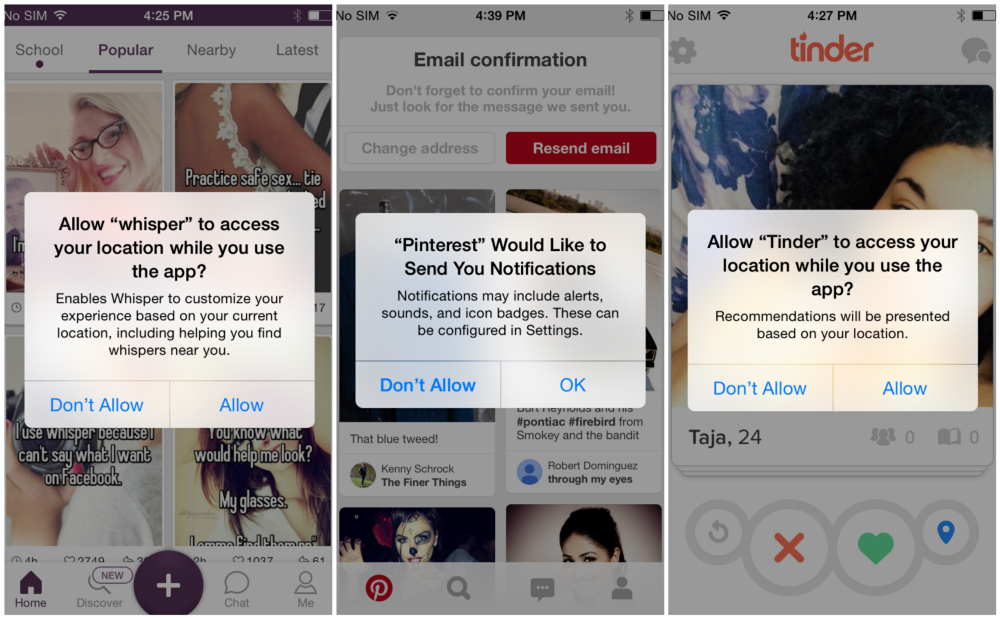Latest news about Bitcoin and all cryptocurrencies. Your daily crypto news habit.

Let’s face it. As much as people love downloading the coolest new iOS app(s) from the Apple App Store, users often complain that they have had intrusive experiences with respect to their private information. Smartphones are more personal than ever before. Users take their phones with them wherever they go and store a lot of information on them. Consequently, there are two important questions to consider: How much access are users prepared to give in return for using your iOS app? And how transparent and relevant are your in-app permissions?
Make in-app permissions work for you, not against you
While permissions can be vital to the functioning of your apps, they can also scare people away, and ultimately be detrimental to your UX. The last thing you want to do is turn your users the away due to in-app permissions that seem intrusive and irrelevant. To help you out, we’ve listed our top tips for taking the fear out of in-app permissions.
Explain your permission and ask only when necessary
Users are already a bit wary of handing over access to their personal information, location, etc. If you ask for permissions excessively or for information that is not relevant to your app, users will be more likely to uninstall your app. Be clear and direct about how the access you need is essential to your app. They might be more likely to share their information with you if you’re up-front and transparent about your permissions and ask only for what you actually need. Make sure to describe why your app needs the information, if it’s not already obvious. It is also a good practice to ask for particular permissions after certain user actions, such as when a user clicks a “share article” button and then is prompted with a permission for access to a social media account. Users are more likely to accept this permission because it gives them a direct understanding of “in order to do A you must do B”.
Make sure the user is properly informed and educated about your app
Instinctively, you are not likely to share a lot of personal information with a person you’ve just met and hardly know. As you become more comfortable with a person, you might start revealing more about yourself. Your instincts tell you to be certain that the other person does not wish to take advantage of you or hurt you in any way. Logically, most people who download apps behave in quite the same way. This is about building trust and credibility with your users. Build yourself a professional web site for your app and make your Apple App Store page as understandable and professional as possible. Make sure your content is written well and conveys transparency. You should also include a thorough FAQ section on your site and within your app. On top of that make sure a support page is easily accessible so that if your users have any questions or qualms, they can easily turn to your support page to get the answers/reassurance they are looking for.
Build trust through your onboarding process
This is another lesson in human behavior 101 — a game of give and take. Or, you could also see it as a simple and mutually beneficial business relationship. If you want valuable information from a user, you must let the user know you have something valuable to offer in return. The process of explaining your app’s benefits during the user’s first session is called value-oriented onboarding. When done right, it can certainly increase your user retention, engagement, and make your users more comfortable with in-app permissions. Just be sure you follow through on the value pitch you’re selling. After you have smoothly onboarded your user and expounded on the key value points, only ask them permissions right then that are essential to your app’s primary function(s). As Ankit Prasad from Product Breakdown keenly notes, “Some apps go further and hit you with a series of requests on first launch (Allow camera access? Location? Notifications?). While this can work if the user is already familiar with the app, there is the risk of the user getting trigger happy and turning them down.” Often times, if you go with this route of multiple permissions at once, it can be harder to bounce back if the user denies them all because you have lost your ability to ask again. You should therefore consider asking some of your permissions only after your users have been able to experience your app and gauge its value. This allows them to make their decision based on a stronger context.
In-app permissions are quite straightforward in terms of their function, but they are not to be taken lightly. If misused or overused, in-app permissions can truly compromise your app’s user experience. As apps and their users become more sophisticated, requesting permissions should be done with caution, nuance, and strategy. When done right, you can notably help increase your user retention and maximize your app’s value. “Ask (wisely) and you shall receive.”
How to Make Your In-App Permissions Less Scary for Your Users was originally published in Hacker Noon on Medium, where people are continuing the conversation by highlighting and responding to this story.
Disclaimer
The views and opinions expressed in this article are solely those of the authors and do not reflect the views of Bitcoin Insider. Every investment and trading move involves risk - this is especially true for cryptocurrencies given their volatility. We strongly advise our readers to conduct their own research when making a decision.



